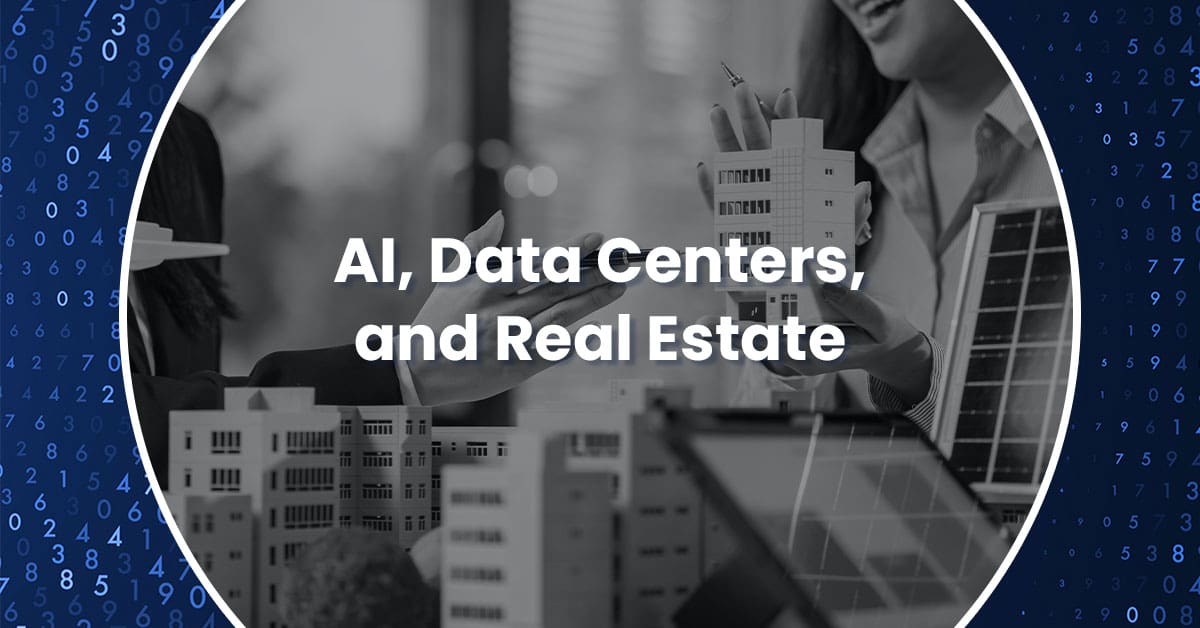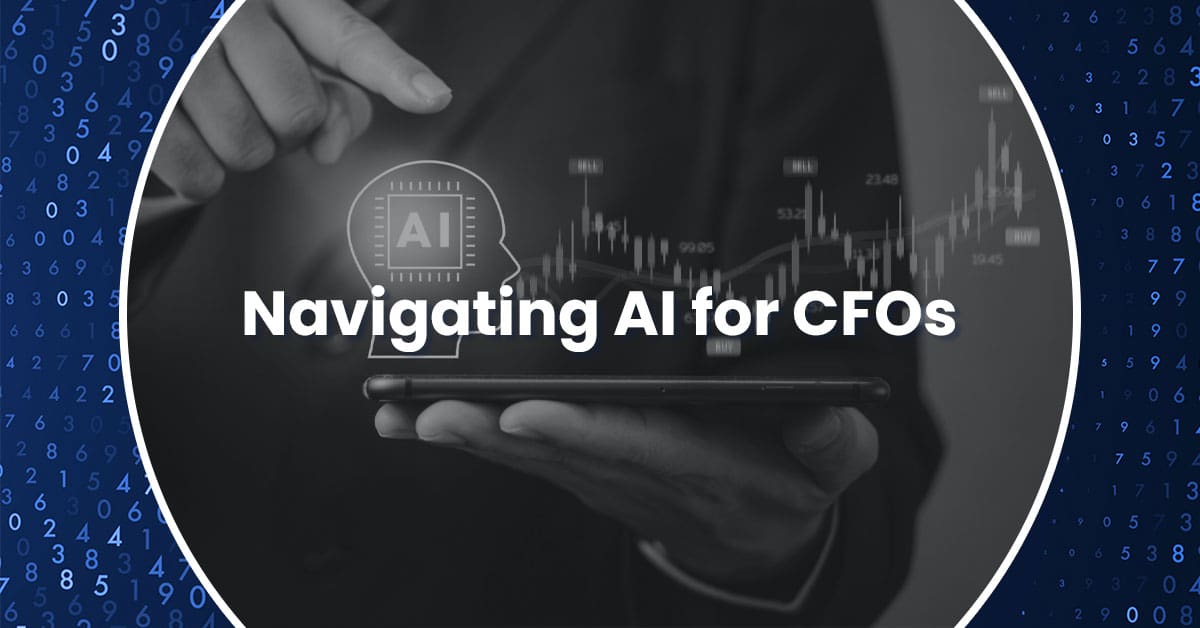How many meetings or conversations have you been in that have touched on the topic of AI? AI is no longer just a buzzword; it has become a daily reality across various industries.
At Wiss, we see it not as optional, but inevitable. And while much of the conversation centers on digital transformation, AI is also reshaping the physical world, particularly in real estate, through the rise of data centers, which fulfill the structural requirements of AI.
A recent report has projected that data center construction in the U.S. is projected to require over $1 trillion in investment through 2030. For real estate professionals, this represents one of the most significant infrastructure shifts in decades, and New Jersey is positioned at the center of it.
As AI models become increasingly complex, they require immense computing power—often delivered through GPU (graphics processing unit) clusters, which are specialized computer chips designed to render images and video, housed in data centers. This demand is driving a surge in real estate activity, from retrofitting industrial buildings to constructing ground-up large campuses.
Developers are now factoring in power availability, fiber connectivity, and cooling capacity as core site selection criteria.
What Are Data Centers?
As the race is on to adopt and implement various AI resources, there is an increased demand for AI infrastructure. What does this mean? We may all be using multiple forms of AI, but behind the scenes, for this AI to function, it requires data centers in strategic locations to house the necessary infrastructure. Data centers can range in size, from small server rooms to massive campuses spanning hundreds of thousands of square feet.
These centers are highly specialized and must accommodate various components, including servers, storage systems, networking equipment, cooling infrastructure, fire suppression systems, security systems, and backup systems.
Data centers are used for the following:
Data Storage & Management
- Store vast amounts of data for businesses, governments, and individuals.
- Enable secure backups and disaster recovery.
Cloud Computing
- Host cloud services like AWS, Microsoft Azure, and Google Cloud.
- Support SaaS platforms (e.g., Salesforce, Zoom, Office 365).
AI & Machine Learning
- Provide high-performance computing (HPC) environments for training and running AI models.
- Support GPU-intensive workloads for generative AI, autonomous systems, and analytics.
Web Hosting & Content Delivery
- Host websites, apps, and streaming platforms.
- Utilize Content Delivery Networks (CDNs) to minimize latency and enhance user experience.
Financial Services
- Enable high-frequency trading, fraud detection, and real-time analytics.
- Support secure transactions and compliance systems.
Enterprise IT Operations
- Run internal business applications like ERP, CRM, and HR systems.
- Support remote work, virtual desktops, and collaboration tools.
Telecommunications & 5G
- Act as hubs for mobile networks and internet service providers.
- Support edge computing for low-latency applications.
Why New Jersey?
Some of the top locations for existing data centers include Virginia, Texas, California, Illinois, and Florida; however, currently, New Jersey is emerging as a top potential market due to its location between New York City and Philadelphia, as well as existing infrastructure, energy-efficient incentives, and disaster resilience.
Strategic Infrastructure Advantages
Connectivity
New Jersey benefits from extensive fiber optic networks and proximity to major internet exchange points, enabling data centers to transmit massive amounts of data almost instantaneously.
Power Infrastructure
Major utilities, including PSE&G and JCP&L, have invested hundreds of millions in infrastructure upgrades to support high-demand facilities. Grid reliability is a critical factor for data center operators who cannot tolerate downtime.
Economic Incentives
Utility Programs
Special utility rate structures are being developed specifically for data centers, aiming to reduce operating costs while encouraging energy efficiency.
Tax Benefits
New Jersey offers tax incentives for energy-efficient equipment and has streamlined permitting processes in designated development zones. Sales tax exemptions on equipment purchases and property tax abatements in certain municipalities can significantly improve project economics.
Geographic Resilience
Unlike markets prone to hurricanes, earthquakes, or extreme weather events, New Jersey offers a stable and secure environment with lower risk profiles—a crucial consideration for facilities housing mission-critical data infrastructure. This is a major risk factor for site selection.
Real Estate and Economic Ripple Effects
With the increase in AI demand ultimately resulting in the need for data centers, there is a cascading effect on the real estate and construction industries, as well as local economies.
Employment Growth
Data center construction generates diverse employment opportunities across multiple phases:
- Construction phase: Electricians, HVAC specialists, structural engineers, and general contractors
- Operational phase: IT professionals, security analysts, facility managers, and maintenance technicians
- Supporting services: Legal, accounting, engineering consulting, and property management firms
Therefore, rather than AI reducing jobs as many often fear, this infrastructure development demonstrates the new opportunities that are created through technological advancement.
Risk Factors and Market Considerations
Real estate professionals should evaluate several evolving challenges:
Power Availability
The primary constraint on data center growth nationwide is the electrical grid’s capacity. New Jersey’s advantage persists today, but sustained growth requires ongoing investment in utility infrastructure and potentially new generation capacity.
Regulatory Environment
Increasing scrutiny of AI power consumption and environmental impact may lead to stricter permitting requirements, energy efficiency mandates, or limitations on development in certain areas.
Market Saturation
While current demand far exceeds supply, developers must assess long-term absorption rates and avoid overbuilding in specific submarkets. Geographic diversification and phased development approaches mitigate this risk.
Technology Evolution
Advances in the technology utilized could alter requirements in these data centers. Maintaining a flexible design allows for future retrofits and protects against obsolescence.
Looking Ahead
As AI continues to evolve, so will the infrastructure that supports it. Data centers are not just tech assets; they’re real estate drivers, economic engines, and proof that AI’s impact is both digital and physical. For developers, investors, and municipalities, understanding this shift is key to staying ahead.
Partner with Experts Who Understand Both Technology and Real Estate
Navigating data center construction opportunities requires expertise spanning real estate fundamentals, infrastructure planning, utility coordination, tax incentives, and technology requirements. The stakes are high, and the complexity demands advisors who understand the complete picture.
Wiss brings together specialists in real estate advisory, tax incentive optimization, and financial modeling to help clients capitalize on this transformative market shift.
Whether you’re a developer evaluating potential sites, an investor assessing data center opportunities, or a municipality planning for infrastructure demands, our team provides the strategic insights and technical expertise to make informed decisions.
Contact Wiss today to discuss how data center construction growth could impact your real estate strategy and explore opportunities in New Jersey’s emerging market.





 Previous
Previous






